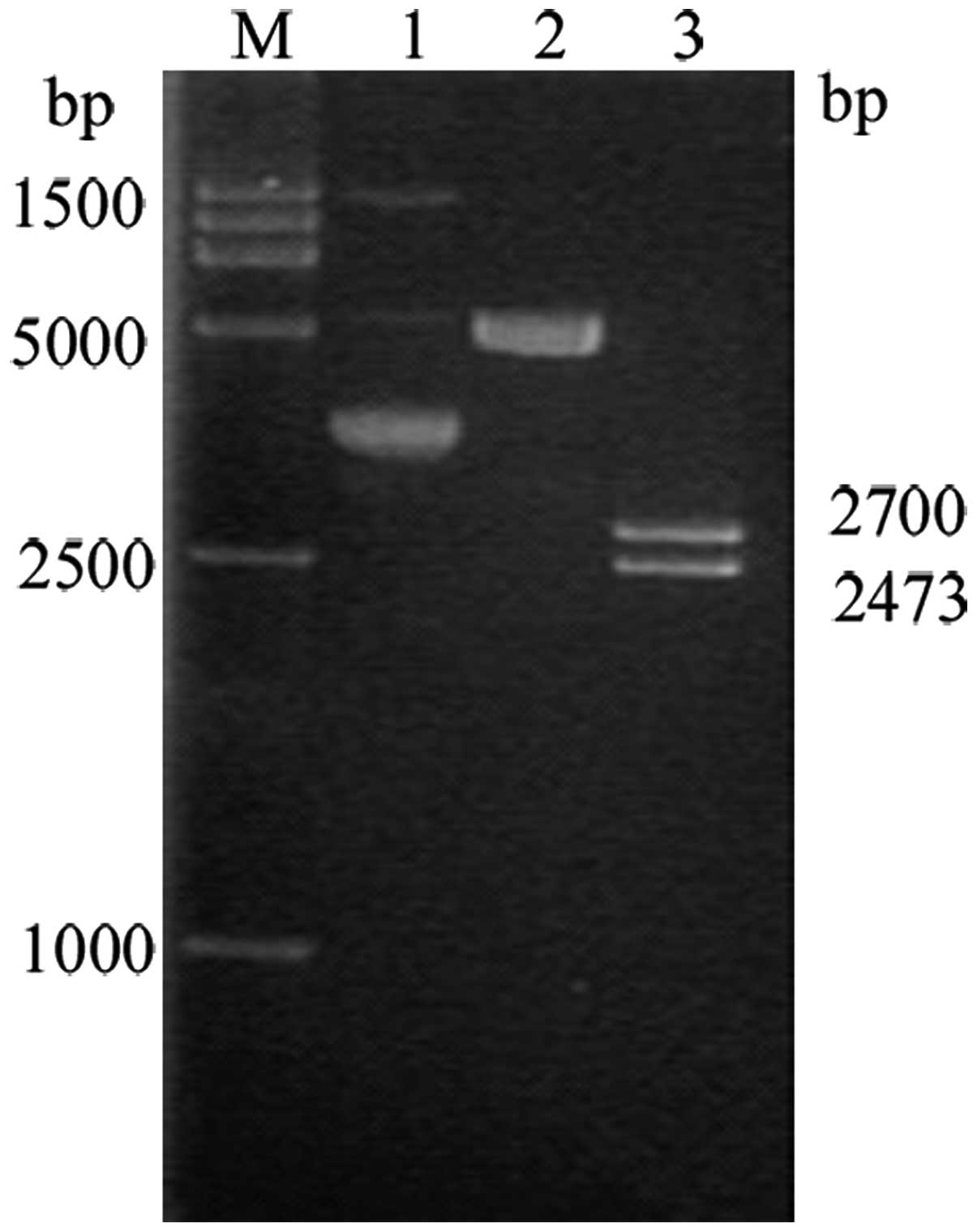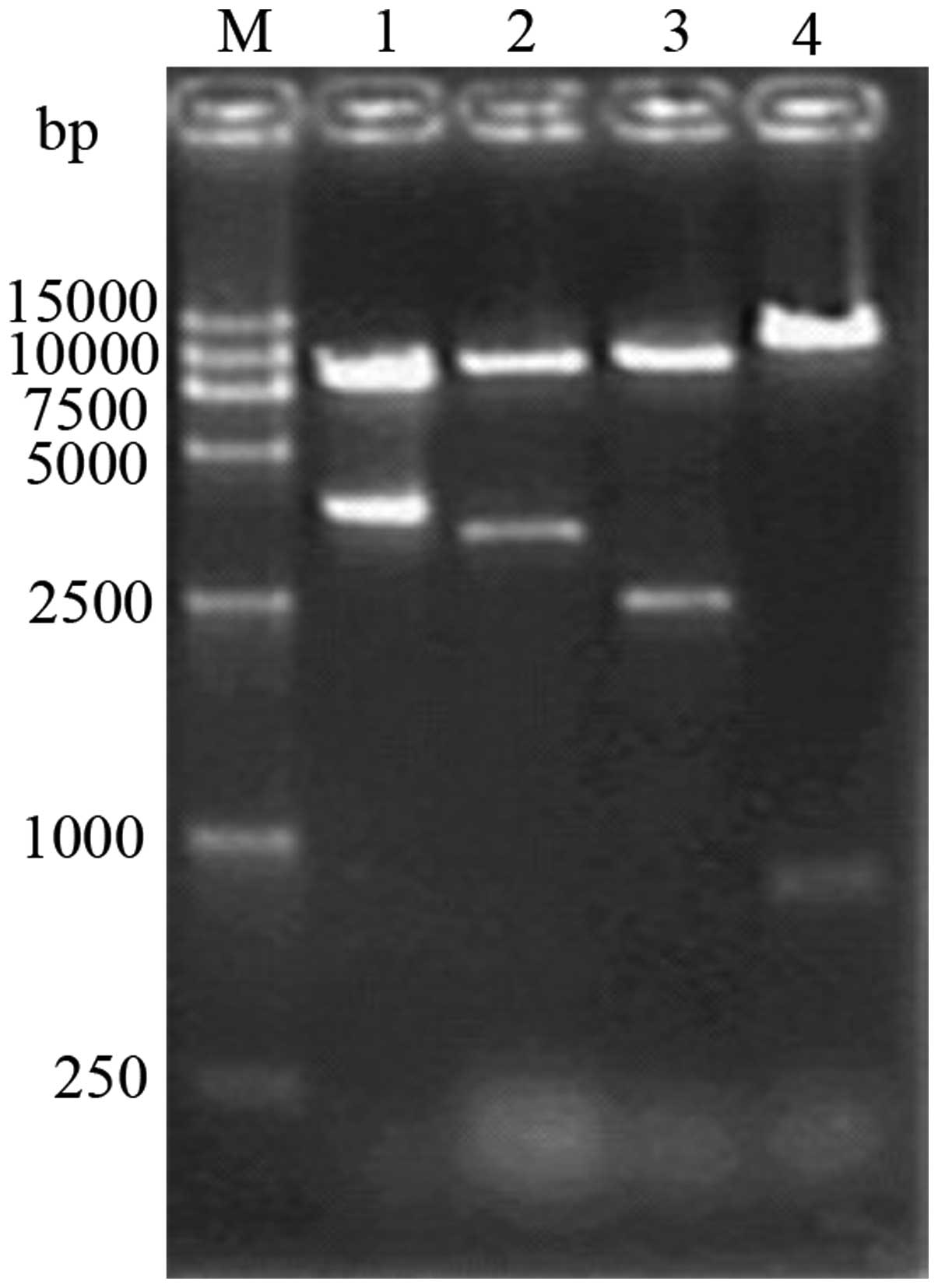|
1
|
Al-Hendy A, Magliocco AM, Al-Tweigeri T,
Braileanu G, et al: Ovarian cancer gene therapy: repeated treatment
with thymidine kinase in an adenovirus vector and ganciclovir
improves survival in a novel immunocompetent murine model. Am J
Obstet Gynecol. 182:553–559. 2000. View Article : Google Scholar : PubMed/NCBI
|
|
2
|
Stoff-Khalili MA, Dall P and Curiel DT:
Gene therapy for carcinoma of the breast. Cancer Gene Ther.
13:633–647. 2006. View Article : Google Scholar : PubMed/NCBI
|
|
3
|
Das S, E1-Deiry WS and Somasundaram K:
Efficient growth inhibition of HPV 16 E6-expressing cells by an
adenovirus-expressing p53 homologue p73beta. Oncogene.
22:8394–8402. 2003. View Article : Google Scholar : PubMed/NCBI
|
|
4
|
Gu W, Putral L, Hengst K, et al:
Inhibition of cervical cancer cell growth in vitro and in vivo with
lentiviral-vector delivered short hairpin RNA targeting human
papillomavirus E6 and E7 oncogenes. Cancer Gene Ther. 13:1023–1032.
2006. View Article : Google Scholar : PubMed/NCBI
|
|
5
|
Alencar TR, Cerqueira DM, da Cruz MR, et
al: New HPV-16 European and non-European variants in central
Brazil. Virus Genes. 35:1–4. 2007. View Article : Google Scholar
|
|
6
|
Kim DH, Kim EM, Lee EH, et al: Human
papillomavirus 16E6 suppresses major histocompatibility complex
class I by upregulating lymphotoxin expression in human cervical
cancer cells. Biochem Biophys Res Commun. 409:792–798. 2011.
View Article : Google Scholar : PubMed/NCBI
|
|
7
|
Scheffner M and Whitaker NJ: Human
papillomavirus-induced carcinogenesis and the ubiquitin-proteasome
system. Semin Cancer Biol. 13:59–67. 2003. View Article : Google Scholar : PubMed/NCBI
|
|
8
|
Song S, Liem A, Miller JA and Lambert PF:
Human papillomavirus types 16 E6 and E7 contribute differently to
carcinogenesis. Virology. 267:141–50. 2000. View Article : Google Scholar : PubMed/NCBI
|
|
9
|
Liu Y, McKalip A and Herman B: Human
papillomavirus type 16 E6 and HPV-16 E6/E7 sensitize human
keratinocytes to apoptosis induced by chemotherapeutic agents:
roles of p53 and caspase activation. J Cell Biochem. 78:334–349.
2000. View Article : Google Scholar : PubMed/NCBI
|
|
10
|
Tran NQ and Crowe DL: Regulation of the
human involucrin gene promoter by co-activator proteins. Biochem J.
381:267–273. 2004. View Article : Google Scholar : PubMed/NCBI
|
|
11
|
Tzvetkov MV, Meineke C, Oetijen E,
Hirsch-Ernst K and Brockmöller J: Tissue-specific alternative
promoters of the serotonin receptor gene HTR3B in human brain and
intestine. Gene. 386:52–62. 2007. View Article : Google Scholar
|
|
12
|
Crish JF and Eckert RL: Synergistic
activation of human involucrin gene expression by Fra-1 and p300 -
evidence for the presence of a multiprotein complex. J Invest
Dermatol. 128:530–541. 2008.
|
|
13
|
Adhikary G, Crish J, Lass J and Eckert RL:
Regulation of involucrin expression in normal human corneal
epithelial cells: a role for activator protein one. Invest
Ophthalmol Vis Sci. 45:1080–1087. 2004. View Article : Google Scholar : PubMed/NCBI
|
|
14
|
Kasparek P, Krenek P, Buryova H, et al:
Transgenic mouse model expressing tdTomato under involucrin
promoter as a tool for analysis of epidermal differentiation and
wound healing. Transgenic Res. 21:683–689. 2012. View Article : Google Scholar
|
|
15
|
Clifford GM, Smith JS, Plummer M, Muñoz N
and Franceschi S: Human papillomavirus types in invasive cervical
cancer worldwide: a meta-analysis. Br J Cancer. 88:63–73. 2003.
View Article : Google Scholar : PubMed/NCBI
|
|
16
|
Porto CR, De Oliveira Kleine JP, Longatto
Filho A and Da Silva ID: Polymorphism of Interleukin-6 is not
associated with the presence or absence of high HPV E6/E7.
Anticancer Res. 34:3501–3504. 2014.PubMed/NCBI
|
|
17
|
Miller J, Dakic A, Chen R, Palechor-Ceron
N, et al: HPV16 E7 protein and hTERT proteins defective for
telomere maintenance cooperate to immortalize human keratinocytes.
PLoS Pathog. 9:e10032842013. View Article : Google Scholar : PubMed/NCBI
|
|
18
|
Zhou J, Li B, Peng C, et al: Inhibition of
cervical cancer cell growth in vitro and in vivo by
lentiviral-vector mediated shRNA targeting the common promoter of
HPV16 E6 and E7 oncogenes. Antiviral Res. 98:305–313. 2013.
View Article : Google Scholar : PubMed/NCBI
|
|
19
|
Weiming Z, Yong X, Deling K, et al:
Tissue-selective RNA interference in prostate cancer cell using
prostate specific membrane antigen promoter/enhancer. Urol Oncol.
27:539–547. 2009. View Article : Google Scholar
|
















